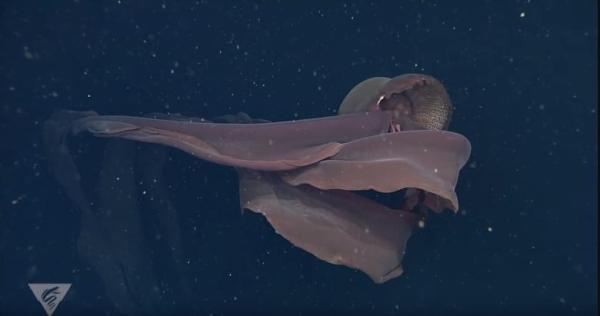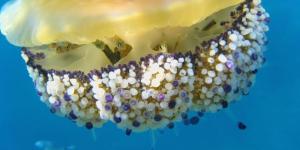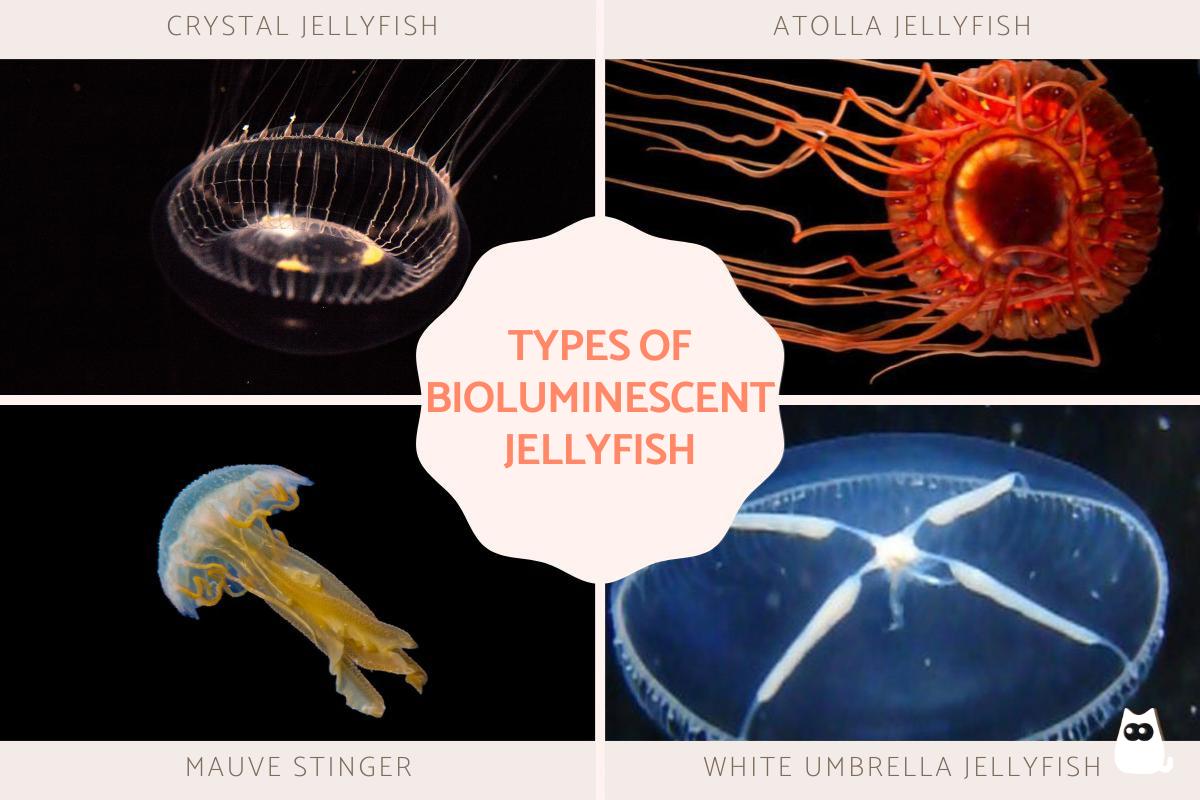Types of Bioluminescent Jellyfish Species


All types of jellyfish are fascinating animals. Some look like creatures you are more likely to find in a fantasy novel or sci-fi movie, but they are real animals and important members of their aquatic ecosystems. Belonging to the Cnidaria phylum, these gelatinous creatures have a great diversity of shapes, sizes and adaptations. Will most have some amount of venom, their threat to humans can vary considerably. Some species of jellyfish also have the particular ability to glow in the dark thanks to a biological process known as bioluminescence. Chemical reactions in the jellyfish body allows them to emit light in dark waters.
The different types of bioluminescent jellyfish species we share at AnimalWised use this ability for various functions, such as defense, communication and attracting prey. We look at some example species in more detail.
- Giant phantom (Stygiomedusa gigantea)
- Helmet jellyfish (Periphylla periphylla)
- Crystal jelly (Aequorea victoria)
- Atolla jellyfish (Atolla wyvillei)
- Firework jellyfish (Halitrephes maasi)
- White umbrella jellyfish (Mitrocoma cellularia)
- Mauve stinger (Pelagia Noctiluca)
- Many-ribbed jellyfish (Aequorea forskalea)
- Flat jellyfish (Aequorea tenuis)
- Macrodactyla jellyfish (Aequorea macrodactyla)
Giant phantom (Stygiomedusa gigantea)
The giant fantom jelly is a rarely observed species of bioluminescent jellyfish. Despite this, it is estimated to have a global distribution, with the exception of the Arctic waters. It is large in size, with an umbrella-shaped bell that can reach 3.3 ft (1 m) in diameter, although it can stretch to 4 to 5 times its size.
It has four paddle-shaped arms that can measure up to 33 ft (10 m). It grows at great depths, around 6,000 m in total. When exposed to light, it has an orange color and its bioluminescence also has a faint orange hue. This can be difficult to see in low-light conditions, such as in the photo below.
If you want to learn more about how all sea jellies survive, take a look at our article exploring the question how do jellyfish breathe?

Helmet jellyfish (Periphylla periphylla)
Also known as the merchant cap jellyfish, the helmet jellyfish has a wide global distribution, including the Southern Ocean, Antarctica and the Antarctic Peninsula, but the Arctic is an exception. It lives in a habitat ranging from the surface to depths of 1,000 m.
It is usually found in shallower areas in cold waters, while in tropical and subtropical regions it ventures deeper. Its body is bell-shaped, with thick tissue and 12 rigid tentacles. Its diameter is about 14" (35 cm), while its length is approximately 7.9" (20 cm). It is usually reddish brown in color and is one of the few species of true jellyfish that glows thanks to its bioluminescence.

Crystal jelly (Aequorea victoria)
This is a species of cnidarian belonging to the group of hydrozoans. Common on the west coast of North America, the crystal jelly inhabits temperate and shallow waters.
It is small in size, with a transparent bell measuring approximately 1.2" (3 cm) and more than 100 tentacles. It is known for being the source of the green fluorescent protein (GFP) used in scientific research. Its bioluminescence emits a bright green light.

Atolla jellyfish (Atolla wyvillei)
Another bioluminescent jellyfish is the atolla jellyfish, also known as the Coronate medusa. It belongs to the group of true jellyfish known as scyphozoans. It lives in the deep waters of oceans around the world, located between 1,000 and 4,000 meters below sea level.
It is bell-shaped and can measure as small as 20 mm. It is dark red in color and has 20 tentacles, with one of these tentacles being hypertrophied. This means it is considerably larger than the others. When attacked, this jellyfish activates its bioluminescence to attract other predators which would be more interested in its attacker than itself. Their bioluminescence flashes intermittently, giving them the nickname of the alarm jellyfish.
Discover what are the most dangerous jellyfish species in our related list.

Firework jellyfish (Halitrephes maasi)
This jellyfish lives in the depths of temperate and tropical waters of the Atlantic, the Indo-Pacific, Antarctica and the Mediterranean Sea. Its bell measures up to 7.9" (20 cm) and has radial patterns of bioluminescence reminiscent of fireworks. The photo below shows why this bioluminescent jellyfish can be confused with underwater fireworks.
Its bioluminescence consists of flashes of bright colors that confuse predators. Little is known about this species, but one of the main observations was made by a deep diving expedition since it lives in areas where oxygen is minimal. When illuminated, a yellow and pink glow could be observed. Without the light they emit, it could go completely unnoticed.

White umbrella jellyfish (Mitrocoma cellularia)
It is a type of hydromedusa that has between 100 and 350 thread-like tentacles which originate from the edge of the bell and alternate between being long and short. Its diameter is about 1.6" (4 cm). The gonads are bluish in color and, together with the radial canals, form a distinctive cross in the species. This cross is depicted in the photo below.
Its habitat ranges from the Bering Sea to Southern California, reaching depths of up to 200 m. If disturbed and in the dark, its bioluminescence can be observed, particularly along the edge of the bell.

Mauve stinger (Pelagia Noctiluca)
This type of bioluminescent jellyfish is also known as the luminous jellyfish thanks to this particular ability. The species is found in the Atlantic, Pacific and Indian Oceans, in both tropical and temperate waters. It is a small animal, with a bell that varies in diameter between 1.2" (3 cm) and 4.7" (12 cm). Its color varies, alternately being mauve, pink, purple, brown or yellow. The photo below shows a mauve stinger with yellow tentacles.
It has four fairly long oral arms and eight tentacles connected directly to the umbrella. It is a bioluminescent jellyfish capable of producing a faint light that can be observed at night. Its light is emitted in short flashes, especially when there are movements in the water, such as waves.
You can learn more about how bioluminescence in invertebrates works with our related guide on how fireflies light up.

Many-ribbed jellyfish (Aequorea forskalea)
This species of bioluminescent jellyfish is characterized by its large umbrella which can reach 6.7" (17 cm) in width. It is thick in the center and thinner towards the edges. Its structure includes between 60 and 80 radial canals, although some individuals have up to 160. Comparatively, the tentacles are usually less numerous.
It is almost colorless, but contains bioluminescent proteins such as aequorin and GFP, which are widely used in scientific research. It lives in temperate and subtropical waters, from the Mediterranean to the south-west Atlantic, the African coast and the North Sea. It prefers depths of 100 to almost 500 m. Its bioluminescence is discrete, but scientifically relevant, highlighting its importance in molecular studies.
Discover the different species of bioluminescent fish if you want to learn about what other aquatic animals can glow in the dark.

Flat jellyfish (Aequorea tenuis)
The flat jellyfish is distinguished by its gelatinous, transparent body, which has a delicate, flattened umbrella that can reach moderate sizes. It has numerous radial canals and thin tentacles, which give it an ethereal appearance.
It lives in temperate and deep waters, especially in coastal areas and continental shelves of North America. It is bioluminescent thanks to the protein aequorin, emitting bluish flashes under certain conditions. This allows it to defend itself and communicate in the darkness of the ocean.

Macrodactyla jellyfish (Aequorea macrodactyla)
This jellyfish can reach a size of 9.8" (25 cm) and possess up to 150 thin, elongated tentacles. Its bioluminescence is remarkable, producing a bright green light thanks to the interaction of the proteins aequorin and GFP. This mechanism occurs when calcium activates coelenterazine, generating blue light that GFP converts to green.
Sharing the same genus as the crystal jellyfish (Aequorea victoria), its luminescence is more intense due to genetic differences in GFP. It inhabits deep waters, commonly in the East China Sea.
Now that you know the main types of bioluminescent jellyfish, you may want to learn about other different types of jellyfish species in our related guide.

If you want to read similar articles to Types of Bioluminescent Jellyfish Species, we recommend you visit our Facts about the animal kingdom category.
- Animal Diversity Web (2020). Available at: https://animaldiversity.org/















